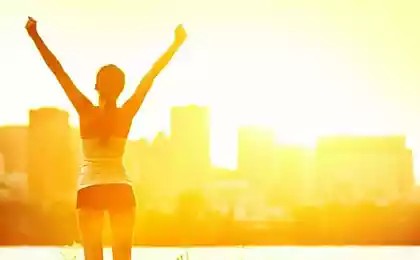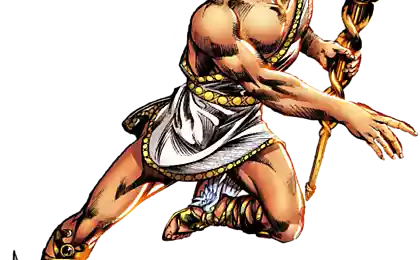599
6 breathing exercises relax 10 minutes
You're overworked, not getting enough sleep and are feeling under constant pressure? There are many ways to find peace – and this does not necessarily need a four-handed massage. It turns out that all we need is a healthy lungs, breathing and 10 minutes. Offer to your attention a six-reviewed breathing exercises drawn from yoga, meditation and even therapy that will help you relax.

The basics of breathing, it is necessary to knowNot need to wait for a nervous breakdown, to begin to pay attention to the breath. Breath control not only helps body and mind function better, but also lowers blood pressure, promotes relaxation and – if the correct use of light – relieves stress.
Effects of breathing exercises on anxiety and anxiety is little studied in the clinical setting, but many experts suggest to use breath to raise awareness and find that elusive state of Zen. To find out more about working on the breath, we spoke to an expert on breathing Dr. Alison McConnell, yoga instructor Rebecca Pacheco, and psychologist Dr. Ellen Langer. Read carefully – it's not as easy as it seems! If you are in a negative state, try to make one of the six exercises that will help you to calm down and get back to work.
1. Sama Vritti or “equal breathing length”How to do it: body needs a balance – it's first breath. Breathe in for four counts and then exhale – also on four accounts. Breathe through your nose – this gives the breath a natural resistance. If you have already mastered the principle of pranayama, try to gradually stretch your breath. Advanced yogis do during inhalation and exhalation of six to eight accounts. This is done in order to calm the nervous system, focus and relieve stress.
When is the most effective: this exercise can be done anytime and anywhere, but most effective to perform it before sleeping. “It's the same as counting sheep,” says Pacheco. “If You can't sleep this type of breathing will help to get rid of worrying and anxious thoughts”.
Level of difficulty: beginner
2. Diaphragmatic breathingHow to do it: Place one hand on chest and another on your stomach. Take a deep breath through the nose. Your diaphragm (not the chest) should be filled with air so that a stretch of the lungs. Take 6-10 deep, slow breaths per minute. Performing this exercise for 10 minutes a day You will soon experience how to slow Your heartbeat and lower blood pressure. If breathing every day for 6-8 weeks, this effect will become much longer.
When is the most effective: before an exam or any other stressful situation. But don't forget that people who are constantly under stress, it can be very difficult to control your breathing.
Level of difficulty: elementary
3. Nadya's Sadhana or “alternating breathing through the nostrils”How to do it: this exercise is the best friend yoga. It helps to achieve tranquility and balance, and unite the right and left hemispheres of our brain. Sit in a comfortable position for meditation, hold the thumb of the right hand the right nostril and take a deep breath through the left nostril. At the end of inhalation close the index finger of the left nostril, and exhale through the right. Keep repeating this process – breathe in through the right nostril and exhale through the left.
When is it most effectively at crucial moments or when you need to focus and gain energy. Just don't do Nadya's Sadhana before bedtime – it “clears the internal channels”. This invigorating exercise has on the body the same effect as a Cup of coffee.
Level of difficulty: medium
4. Kapalabhati or “breath, cleansing skull”How to do it: This exercise begins with a deep slow inhalation followed by a short and sharp exhalation, starting from the lower abdomen. Once you get used to the muscle contraction of the stomach, increase the number of breaths in each set or start doing delay.
When is it most effective: when you need to Wake up, to warm up or to look at the situation from a positive perspective. “You will have to actively work the stomach, says Pacheco, but this exercise will help warm the body, get rid of stagnant energy and awaken the brain.” If Nadya's Sadhana is cappuccino, Kapalabhati is an espresso.
Level of difficulty: advanced
5. Active relaxationHow to do it: to totally reset the tension, close your eyes and start in two or three seconds to lower each group of muscles. Start with the feet and toes, then work your way up to the knees, thighs, chest, hands, palms, neck, jaw and eyes. Do not forget to do deep long breaths. If you find it hard to take it slowly before you contract the muscles, try to breathe through the nose. Count to five, relax, and exhale through the mouth.
When it is most effective: at home, at work or even on the road. But be careful: don't need to bring yourself to dizziness. If you feel difficult to hold breath for long time, do not strain and try to hold him for a few seconds.
Level of difficulty: elementary
6. VisualizationHow to do it: think about nothing and move in your imagination in your ideal world. Breathe. Try to replace all negative thoughts with positive images.
Psychologist Ellen Langer asserts that visualization is not just a way of achieving mindfulness. “Visualization helps us navigate to where we're nice and calm and not allow the mind to engage in inner dialogue, which is causing stress and anxiety”.
When it makes the most sense: in any place where you can safely close your eyes and relax (for example, not driving the car).
Level of difficulty: medium
Stress disorder and other everyday troubles are not going anywhere, but the good news is that your breath will always be ready to come to your rescue. published
P. S. And remember, only by changing their consumption — together we change the world! ©
Source: 5sfer.com/8118-6-dyxatelnyx-uprazhnenij-kotorye-pomogayut-rasslabitsya-za-10-minut.html#main

The basics of breathing, it is necessary to knowNot need to wait for a nervous breakdown, to begin to pay attention to the breath. Breath control not only helps body and mind function better, but also lowers blood pressure, promotes relaxation and – if the correct use of light – relieves stress.
Effects of breathing exercises on anxiety and anxiety is little studied in the clinical setting, but many experts suggest to use breath to raise awareness and find that elusive state of Zen. To find out more about working on the breath, we spoke to an expert on breathing Dr. Alison McConnell, yoga instructor Rebecca Pacheco, and psychologist Dr. Ellen Langer. Read carefully – it's not as easy as it seems! If you are in a negative state, try to make one of the six exercises that will help you to calm down and get back to work.
1. Sama Vritti or “equal breathing length”How to do it: body needs a balance – it's first breath. Breathe in for four counts and then exhale – also on four accounts. Breathe through your nose – this gives the breath a natural resistance. If you have already mastered the principle of pranayama, try to gradually stretch your breath. Advanced yogis do during inhalation and exhalation of six to eight accounts. This is done in order to calm the nervous system, focus and relieve stress.
When is the most effective: this exercise can be done anytime and anywhere, but most effective to perform it before sleeping. “It's the same as counting sheep,” says Pacheco. “If You can't sleep this type of breathing will help to get rid of worrying and anxious thoughts”.
Level of difficulty: beginner
2. Diaphragmatic breathingHow to do it: Place one hand on chest and another on your stomach. Take a deep breath through the nose. Your diaphragm (not the chest) should be filled with air so that a stretch of the lungs. Take 6-10 deep, slow breaths per minute. Performing this exercise for 10 minutes a day You will soon experience how to slow Your heartbeat and lower blood pressure. If breathing every day for 6-8 weeks, this effect will become much longer.
When is the most effective: before an exam or any other stressful situation. But don't forget that people who are constantly under stress, it can be very difficult to control your breathing.
Level of difficulty: elementary
3. Nadya's Sadhana or “alternating breathing through the nostrils”How to do it: this exercise is the best friend yoga. It helps to achieve tranquility and balance, and unite the right and left hemispheres of our brain. Sit in a comfortable position for meditation, hold the thumb of the right hand the right nostril and take a deep breath through the left nostril. At the end of inhalation close the index finger of the left nostril, and exhale through the right. Keep repeating this process – breathe in through the right nostril and exhale through the left.
When is it most effectively at crucial moments or when you need to focus and gain energy. Just don't do Nadya's Sadhana before bedtime – it “clears the internal channels”. This invigorating exercise has on the body the same effect as a Cup of coffee.
Level of difficulty: medium
4. Kapalabhati or “breath, cleansing skull”How to do it: This exercise begins with a deep slow inhalation followed by a short and sharp exhalation, starting from the lower abdomen. Once you get used to the muscle contraction of the stomach, increase the number of breaths in each set or start doing delay.
When is it most effective: when you need to Wake up, to warm up or to look at the situation from a positive perspective. “You will have to actively work the stomach, says Pacheco, but this exercise will help warm the body, get rid of stagnant energy and awaken the brain.” If Nadya's Sadhana is cappuccino, Kapalabhati is an espresso.
Level of difficulty: advanced
5. Active relaxationHow to do it: to totally reset the tension, close your eyes and start in two or three seconds to lower each group of muscles. Start with the feet and toes, then work your way up to the knees, thighs, chest, hands, palms, neck, jaw and eyes. Do not forget to do deep long breaths. If you find it hard to take it slowly before you contract the muscles, try to breathe through the nose. Count to five, relax, and exhale through the mouth.
When it is most effective: at home, at work or even on the road. But be careful: don't need to bring yourself to dizziness. If you feel difficult to hold breath for long time, do not strain and try to hold him for a few seconds.
Level of difficulty: elementary
6. VisualizationHow to do it: think about nothing and move in your imagination in your ideal world. Breathe. Try to replace all negative thoughts with positive images.
Psychologist Ellen Langer asserts that visualization is not just a way of achieving mindfulness. “Visualization helps us navigate to where we're nice and calm and not allow the mind to engage in inner dialogue, which is causing stress and anxiety”.
When it makes the most sense: in any place where you can safely close your eyes and relax (for example, not driving the car).
Level of difficulty: medium
Stress disorder and other everyday troubles are not going anywhere, but the good news is that your breath will always be ready to come to your rescue. published
P. S. And remember, only by changing their consumption — together we change the world! ©
Source: 5sfer.com/8118-6-dyxatelnyx-uprazhnenij-kotorye-pomogayut-rasslabitsya-za-10-minut.html#main
Morning parfaits with yogurt and grapefruit
QuickerTek has released the first solar charger for laptops for Apple MacBook























